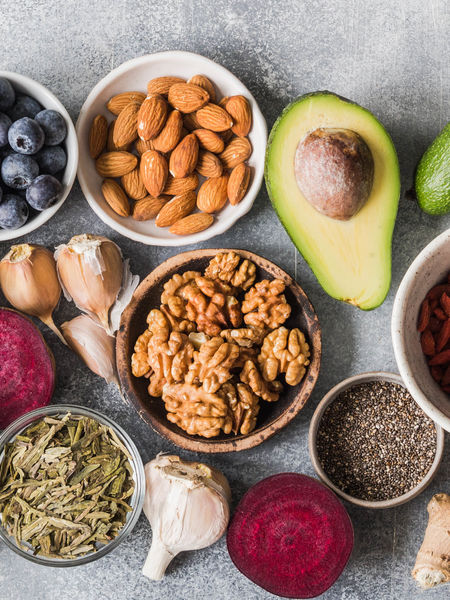Tea for Self-Nutrition: Protein


Hello there!
As a trainer and nutrition coach, the big thing right now is seeing people who want to completely revamp their health habits in honor of the new decade. My job is to grab ya’ll by the reins and go, "Slow down!"
"Wha?" you might ask. "Why slow down? Don’t you want me nice and revved up to change my life for the better?"
Yes, but no.
I know it’s appealing to wake up January first, knock back a smoothie, and run five miles to start the year off right. But is it sustainable for the long haul?
For some people, yes. I know from working with fandom folk in particular, if we decide that we want to train to be Plus Ultra Super Saiyan for the next Comic-Con, then we do. We just do. Something in our happy-odd wiring makes that happen.
But we’re not the majority. And even among us, sustainability of a health routine is still an issue because we need something to keep us going beyond a temporary aesthetic deadline or goal.
Which brings us back to the point: how to start?
In the kitchen, of course. Bodybuilding lore says, "Abs are made in the kitchen and revealed at the gym," so let’s go there to start. (Plus, the kitchen is where the tea lives. And that’s our ultimate destination for this article.)
The first thing I recommend to anyone who wants to re-realize their nutrition is to get your macronutrients in order. That means identifying what ratio of protein, carbohydrates, and fat make you feel most optimal. And yes, "most optimal" is probably redundant, but if we’re going to reference Plus Ultra already, then all hyperbolic statements count for MAXIMUM MOTIVATION.
Today’s article focuses on a single macro: protein. I know you want to learn all of them at once, but remember what I said about sustainability?
Thank you.
Proteins are the building blocks of your body. I’d recommend clicking that link so that you can learn in greater detail what’s the science behind it, but only after you have a full understanding of what I really mean by "the building blocks of your body," because right now I’m not being cutesy-metaphorical. Every solid thing in your body is made of protein or its constituents.
Hair? Check.
Nails? Check.
Teeth? Check.
Bones? Check.
Organs? Check.
Brain? Check.
Touch yourself anywhere, and you’re touching aminos bound together to create collagen, elastin, keratin, cartilage— ok, you get the point. Stay with me.
Now, how much protein do you think you need to keep all that beautiful stuff in your body running smoothly?
Well, as much as you see in front of you. Literally. You want to aim for your body’s worth in protein in order to maintain, build muscle, prevent injury, and most importantly, heal.
Please, don’t fall into the trap of thinking you don’t need protein if you aren’t an athlete, or if you don’t work out. If you are breathing, you need it to survive, because your lungs are made of the tissue that requires protein to exist and do its job to keep you breathing and existing as well.
Alright, now that we got the shock value out of the way, your next question is probably, "Good golly gosh, however am I going to radically change my diet to get that much protein in?"
And my answer is you don’t have to. You’ll start off small, and gradually add larger portions of protein to your meals, while gradually adjusting the other macronutrients (carbs and fat) around it to taste. And don’t worry! I’ll get to those dudes in the next two articles.
For now, your priority is to get your building blocks solid and strong. That’s why I recommend tea as the perfect way to help you and your body adjust to this process.
Pu-Erh has been a favorite for centuries as a powerhouse digestif. My favorite— and likely the strongest one— has to be Adagio’s Yunnan Pu-Erh White Tea, since it’s just oh-so-silky on the tongue and lasts for multiple steeps.
But if Pu-Erh is still an unfamiliar realm for you, then don’t worry about being overwhelmed. Adagio has a delightful selection of flavored blends that help you ease into the new drink, just as you ease into your new health habit. I’d recommend titillating your palate with Pu-Erh Hazelberry, Pu-Erh Chorange, Pu-Erh Spice, and Pu-Erh Tahiti in order to have a variety on hand for your various exciting new dishes that might accompany your new nutritional focus. (And if you’re not the new-dish-trying type, then you get the added benefit of extra tea in your life. Everyone wins.)
Just remember to steep this one like an old friend: over and over again, until there’s very little left to talk about, and you go home happy and content— with a healthy metabolism as an added benefit.
Cheers!
Natasha Nesic
NASM Certified Personal Trainer and Nutrition Coach, Founder of Work Life Fitness
